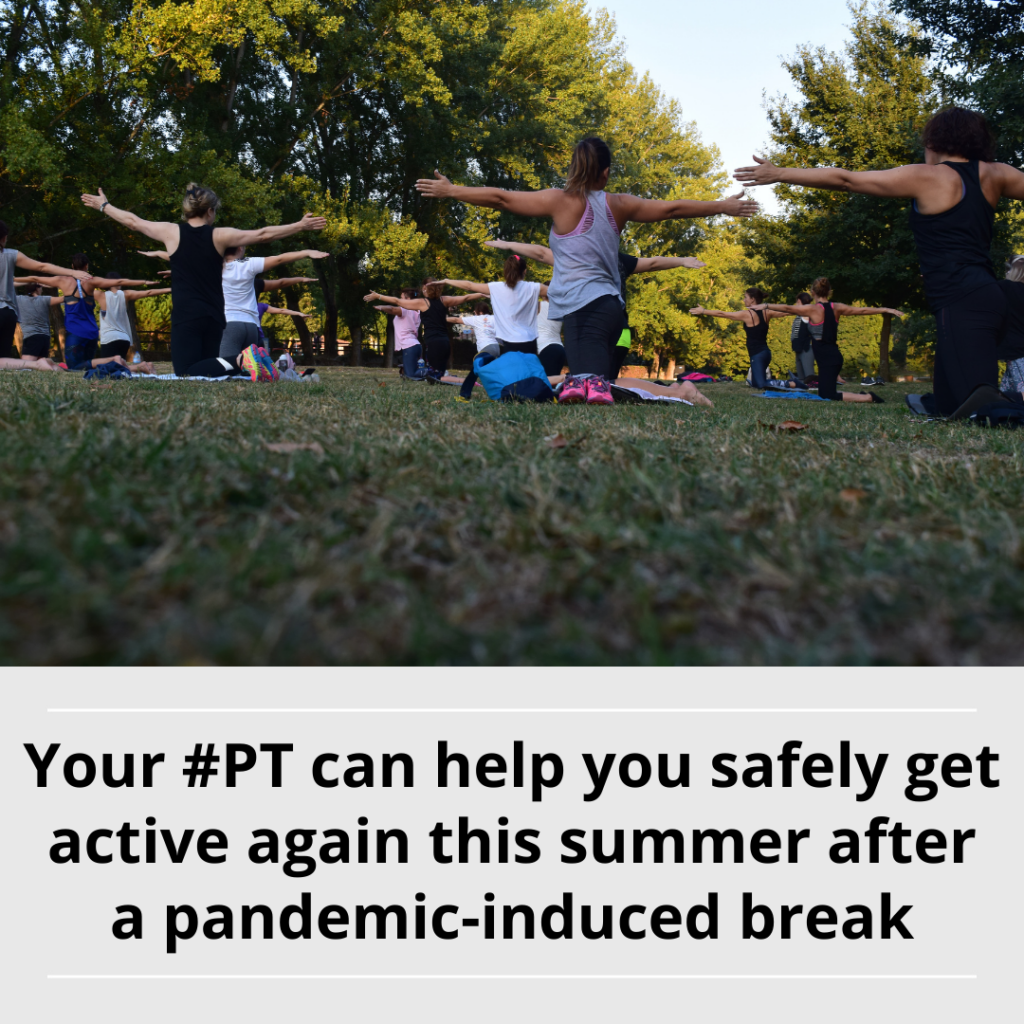Returning to Activity After a Pandemic

(Used with permission from The American Physical Therapy Association, July 2021)
During the COVID-19 pandemic, activity levels dropped for a lot of people. Between stay at
home orders, gym closures and working from home, people became more sedentary. On top of
that, there were shortages of equipment like dumbbells and bicycles, making staying active at
home difficult even if you wanted to.
But this summer, things look different; vaccines are widely available, restrictions are loosening
and people are looking to get active and enjoy the warm weather. That’s all good news, but if
you had a long break from activity, your body might not be ready to jump right back in. Here
are a few tips to help you get more active without getting hurt:
Start Slow
● If you’re a runner, think about a walk to run program
● If you’re a weight lifter, start with lighter weights and less reps.
● Whatever your activity of choice is, start with short periods of activity and gradually
work your way back up.
Warm Up and Cool Down
Warming up gets your heart and lungs ramped up and prepares your muscles and tendons for
the increase in activity about to come. Include some light cardio like jogging, calisthenics, or
cycling, followed by active stretching like butt kicks, high knees, or yoga.
Cooling down transitions your body back to a lower state of stress – it brings your heart rate and
breathing down, decreases blood flow to your muscles and back to places like your digestive
system, and helps you relax. It’s also a great place for static stretches if you need some work on
your flexibility.

Take A Day Off
Rest days let your body recover and keep you from getting burned out. Not enough exercise
isn’t good for you, but too much of a good thing can cause problems too.
Watch for early signs of injury
Some soreness for a few days after activity is normal, especially if you’ve had a long break. But
there are a few common issues to watch out for as you return to activity:
● Swelling or bruising
● Joint pain, especially in the knees or shoulders
● Foot pain, which could be a sign of plantar fasciitis
● Muscle strains – particularly common in the hamstrings
● Sprains – most common in the ankle
Any of these issues justifies a call to your physical therapist. Getting checked out early can
prevent an injury that derails your attempt to return to activity. PTs see all of the issues just
mentioned on a regular basis and can help safely guide you back into a more active lifestyle.
